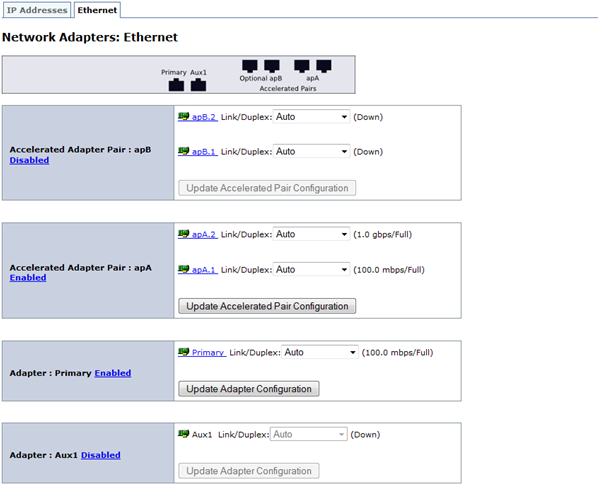-
-
Customizing the Ethernet ports
-
Inline Mode
-
High-Availability Mode
-
-
Manage and monitor using Citrix Application Delivery Management
-
This content has been machine translated dynamically.
Dieser Inhalt ist eine maschinelle Übersetzung, die dynamisch erstellt wurde. (Haftungsausschluss)
Cet article a été traduit automatiquement de manière dynamique. (Clause de non responsabilité)
Este artículo lo ha traducido una máquina de forma dinámica. (Aviso legal)
此内容已经过机器动态翻译。 放弃
このコンテンツは動的に機械翻訳されています。免責事項
이 콘텐츠는 동적으로 기계 번역되었습니다. 책임 부인
Este texto foi traduzido automaticamente. (Aviso legal)
Questo contenuto è stato tradotto dinamicamente con traduzione automatica.(Esclusione di responsabilità))
This article has been machine translated.
Dieser Artikel wurde maschinell übersetzt. (Haftungsausschluss)
Ce article a été traduit automatiquement. (Clause de non responsabilité)
Este artículo ha sido traducido automáticamente. (Aviso legal)
この記事は機械翻訳されています.免責事項
이 기사는 기계 번역되었습니다.책임 부인
Este artigo foi traduzido automaticamente.(Aviso legal)
这篇文章已经过机器翻译.放弃
Questo articolo è stato tradotto automaticamente.(Esclusione di responsabilità))
Translation failed!
Customizing the Ethernet ports
A typical appliance has four Ethernet ports: two accelerated bridged ports, called accelerated pair A (apA.1 and apA.2), with a bypass (fail-to-wire) relay, and two unaccelerated motherboard ports, called Primary and Aux1. The bridged ports provide acceleration, while the motherboard ports are sometimes used for secondary purposes. Most installations use only the bridged ports.
Some SD-WAN units have only the motherboard ports. In this case, the two motherboard ports are bridged.
The appliance’s user interface can be accessed by a VLAN or non-VLAN network. You can assign a VLAN to any of the appliance’s bridged ports or motherboard ports for management purposes.
Figure 1. Ethernet Ports

Port List
The ports are named as follows:
| Ethernet Port | Name |
|---|---|
| Motherboard port 1 | Primary (or apA.1 if no bypass card is present) |
| Motherboard port 2 | Auxiliary1 or Aux1 (or apA.2 if no bypass card is present) |
| Bridge #1 | Accelerated Pair A (apA, with ports apA.1 and apA.2) |
| Bridge #2 | Accelerated Pair B (apB, with ports apB.1 and apB.2) |
Table 1. Ethernet Port Names
Share
Share
In this article
This Preview product documentation is Cloud Software Group Confidential.
You agree to hold this documentation confidential pursuant to the terms of your Cloud Software Group Beta/Tech Preview Agreement.
The development, release and timing of any features or functionality described in the Preview documentation remains at our sole discretion and are subject to change without notice or consultation.
The documentation is for informational purposes only and is not a commitment, promise or legal obligation to deliver any material, code or functionality and should not be relied upon in making Cloud Software Group product purchase decisions.
If you do not agree, select I DO NOT AGREE to exit.